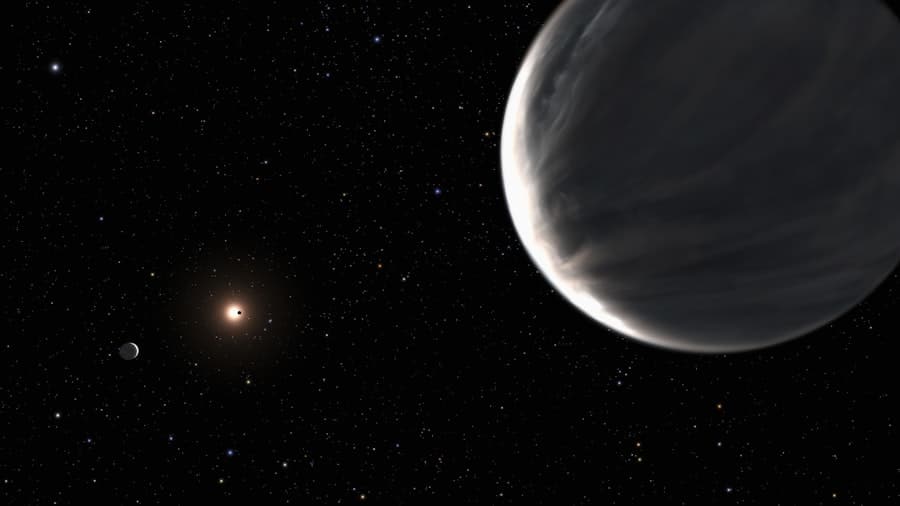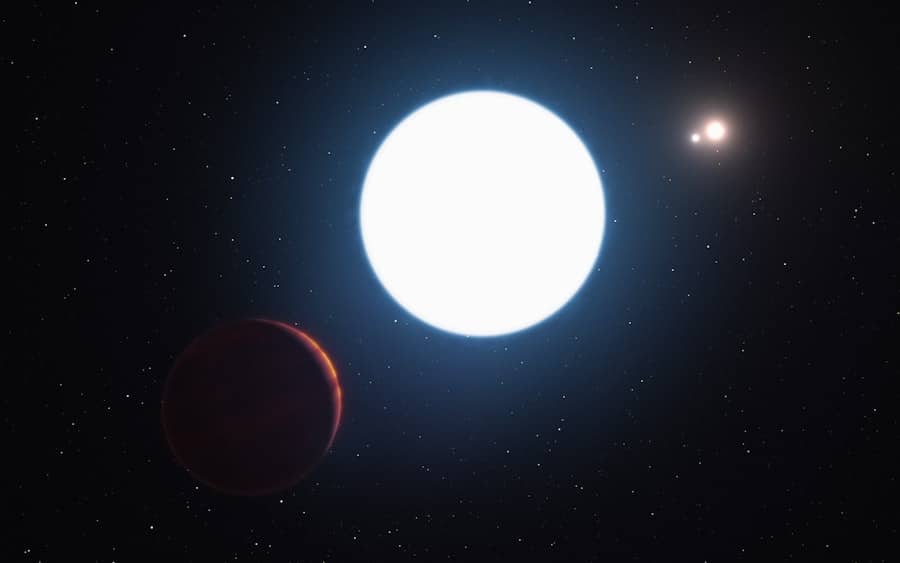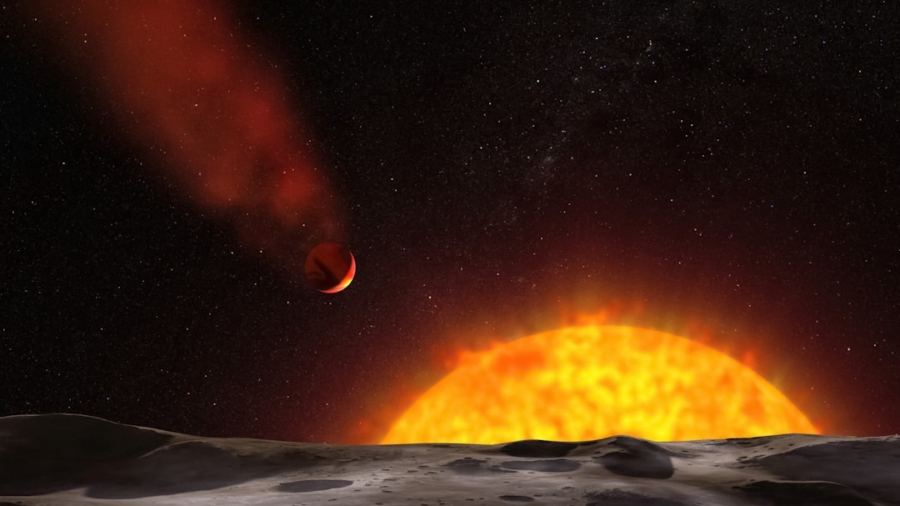The quest to discover exoplanets—planets that orbit stars outside our solar system—has transformed our understanding of the universe and our place within it. The first confirmed detection of an exoplanet occurred in 1992, when astronomers Aleksander Wolszczan and Dale Frail identified planets orbiting a pulsar. This groundbreaking discovery opened the floodgates for further exploration, leading to the identification of thousands of exoplanets in the years that followed.
The methods employed to detect these distant worlds have evolved significantly, ranging from the radial velocity method, which measures the wobble of stars caused by gravitational interactions with orbiting planets, to the transit method, which observes the dimming of a star’s light as a planet passes in front of it. As of October 2023, over 5,000 exoplanets have been confirmed, with many more candidates awaiting validation. The diversity of these planets is staggering; they range from gas giants larger than Jupiter to rocky worlds comparable in size to Earth.
The sheer variety of exoplanets has prompted scientists to rethink planetary formation and evolution theories. The search for exoplanets is not merely an academic exercise; it is driven by a profound curiosity about the potential for life beyond our own planet. Each new discovery adds a piece to the puzzle of understanding how common or rare habitable conditions might be in the universe.
Key Takeaways
- The search for exoplanets has revealed thousands of planets outside our solar system, with many more waiting to be discovered.
- The habitable zone is the region around a star where conditions may be right for liquid water to exist on a planet’s surface, a key criteria for potential habitability.
- Detecting habitable exoplanets involves using various methods such as transit photometry, radial velocity, and direct imaging to study the characteristics of these distant worlds.
- Current and future missions, such as the James Webb Space Telescope and the TESS mission, are aimed at expanding our knowledge of exoplanets and their potential habitability.
- Challenges in finding habitable exoplanets include the limitations of current technology, the vast distances involved, and the need for more advanced instruments and techniques.
Habitable Zone and Criteria
The concept of the habitable zone, often referred to as the “Goldilocks Zone,” is central to the search for life beyond Earth. This zone is defined as the region around a star where conditions are just right for liquid water to exist on a planet’s surface—neither too hot nor too cold. The distance from a star that constitutes this zone varies depending on the star’s size and temperature.
For instance, Earth resides in the habitable zone of our Sun, while Mars is on the outer edge, and Venus is on the inner edge. However, being located within the habitable zone is not the sole criterion for determining a planet’s potential to support life. Other factors come into play, such as atmospheric composition, geological activity, and magnetic fields.
A planet may reside in the habitable zone but lack a substantial atmosphere, rendering it inhospitable. For example, Mars has evidence of past water but currently possesses a thin atmosphere that cannot support liquid water on its surface for extended periods. Additionally, a planet’s geological activity can influence its climate and atmosphere; tectonic activity can recycle carbon dioxide and maintain a stable climate over geological timescales.
Detecting Habitable Exoplanets

Detecting habitable exoplanets involves sophisticated techniques that have been refined over decades. The transit method remains one of the most effective ways to identify potentially habitable worlds. This technique relies on monitoring the brightness of stars over time; when a planet transits in front of its host star, it causes a temporary dip in brightness.
By analyzing these dips, astronomers can infer the planet’s size and orbital period. The Kepler Space Telescope, launched in 2009, utilized this method to discover thousands of exoplanets, many of which lie within their stars’ habitable zones. Another promising technique is direct imaging, which involves capturing images of exoplanets by blocking out the light from their host stars.
This method is particularly useful for studying larger planets that are farther from their stars. Instruments like the Very Large Telescope (VLT) and future missions such as the James Webb Space Telescope (JWST) are equipped with advanced technologies that allow astronomers to analyze the atmospheres of these distant worlds. By studying the light that filters through an exoplanet’s atmosphere during transits or direct imaging, scientists can identify chemical signatures indicative of potential habitability, such as water vapor, carbon dioxide, and even oxygen.
Current and Future Missions
The landscape of exoplanet exploration is continually evolving, with numerous missions currently underway and planned for the future. The Transiting Exoplanet Survey Satellite (TESS), launched in 2018, aims to survey nearby stars for transiting exoplanets. TESS focuses on bright stars that are relatively close to Earth, making follow-up observations more feasible with ground-based telescopes.
This mission has already yielded exciting discoveries and has set the stage for more detailed studies of potentially habitable planets. Looking ahead, the James Webb Space Telescope (JWST), launched in December 2021, represents a significant leap forward in our ability to study exoplanets. With its advanced infrared capabilities, JWST can analyze the atmospheres of exoplanets in unprecedented detail.
It will be able to detect chemical signatures that could indicate biological processes or other signs of habitability. Additionally, missions like the European Space Agency’s ARIEL (Atmospheric Remote-sensing Infrared Exoplanet Large-survey) are planned for the late 2020s and will focus specifically on characterizing the atmospheres of a wide range of exoplanets, including those in their stars’ habitable zones.
Challenges in Finding Habitable Exoplanets
Despite significant advancements in technology and methodology, several challenges remain in the search for habitable exoplanets. One major hurdle is distinguishing between true signals from exoplanets and false positives caused by stellar activity or other astrophysical phenomena. For instance, variations in a star’s brightness due to spots or flares can mimic the signals expected from transiting planets.
This necessitates careful analysis and often requires multiple observations over time to confirm a planet’s existence. Another challenge lies in our limited understanding of what constitutes habitability. While we often focus on Earth-like conditions—liquid water, suitable temperatures, and an atmosphere—life may exist in forms we cannot yet comprehend.
For example, some researchers speculate about life existing in extreme environments on other celestial bodies within our solar system, such as Europa or Enceladus, which harbor subsurface oceans beneath icy crusts. This raises questions about whether we should broaden our criteria for habitability beyond Earth-centric models when searching for life elsewhere.
Potential Habitable Exoplanets

As astronomers continue their search for habitable exoplanets, several candidates have emerged as particularly intriguing. Proxima Centauri b, located just over four light-years away from Earth, orbits within the habitable zone of its host star, Proxima Centauri. Despite its proximity, Proxima Centauri b presents challenges due to its star being a red dwarf that emits strong stellar flares, which could strip away its atmosphere and hinder potential habitability.
Another notable candidate is TRAPPIST-1e, part of a system containing seven Earth-sized planets orbiting a cool dwarf star approximately 40 light-years away. Three of these planets lie within the habitable zone, making them prime targets for further study. The TRAPPIST-1 system has garnered significant interest due to its potential for diverse environments and conditions that could support life.
Kepler-186f is another promising candidate located about 500 light-years away in the constellation Cygnus. It is roughly the same size as Earth and orbits within its star’s habitable zone. The discovery of such planets has sparked discussions about their atmospheres and potential biosignatures that could be detected by future missions.
Implications for Life Beyond Earth
The implications of discovering habitable exoplanets extend far beyond scientific curiosity; they challenge our understanding of life itself and our place in the cosmos.
The existence of even microbial life on another planet would fundamentally alter our perspective on biology and evolution.
Moreover, finding habitable exoplanets could inform future exploration efforts beyond our solar system. If we identify planets with conditions similar to Earth’s, it may inspire missions aimed at sending probes or even human explorers to these distant worlds. The prospect of interstellar travel remains daunting due to vast distances; however, advancements in propulsion technology could one day make such journeys feasible.
The Future of Exoplanet Exploration
The future of exoplanet exploration holds immense promise as technology continues to advance at an unprecedented pace. Upcoming missions like NASA’s Habitable Worlds Observatory aim to directly image Earth-like exoplanets and analyze their atmospheres for signs of life. These missions will leverage cutting-edge technologies such as coronagraphs and starshades to block out starlight and reveal faint planetary signals.
In addition to space-based observatories, ground-based initiatives are also making strides in exoplanet research. Telescopes equipped with adaptive optics systems are improving our ability to observe distant worlds with greater clarity than ever before. As international collaboration increases among space agencies and research institutions, we can expect a more comprehensive understanding of planetary systems across our galaxy.
The ongoing search for habitable exoplanets represents one of humanity’s most ambitious scientific endeavors—a quest not only to find new worlds but also to answer fundamental questions about existence itself. As we continue to push the boundaries of exploration and technology, we inch closer to unraveling the mysteries that lie beyond our solar system and perhaps discovering that we are not alone in this vast universe.
A related article that delves into the impact of emerging technologies on this field can be found on Wired.com. This article, titled “Wired.com Focuses on How Emerging Technologies,” discusses how advancements in technology are revolutionizing our approach to space exploration and the search for life beyond Earth. For more insights, you can read the full article here.
FAQs
What is an exoplanet?
An exoplanet is a planet that orbits a star outside of our solar system.
What makes an exoplanet habitable?
A habitable exoplanet is one that has the potential to support life, based on factors such as its distance from its host star, the presence of water, and the composition of its atmosphere.
How do scientists search for habitable exoplanets?
Scientists use a variety of methods to search for habitable exoplanets, including the transit method, radial velocity method, and direct imaging.
What is the transit method?
The transit method involves observing the slight dimming of a star’s light as an exoplanet passes in front of it, indicating the presence of an orbiting planet.
What is the radial velocity method?
The radial velocity method involves measuring the slight wobble of a star caused by the gravitational pull of an orbiting exoplanet.
What is direct imaging?
Direct imaging involves capturing actual images of exoplanets using telescopes, which is challenging due to the brightness of the host star.
How many exoplanets have been discovered so far?
As of now, over 4,000 exoplanets have been confirmed, with thousands more awaiting confirmation.
What are some of the most promising exoplanets for habitability?
Some of the most promising exoplanets for habitability include Proxima Centauri b, TRAPPIST-1e, and LHS 1140 b, among others.

